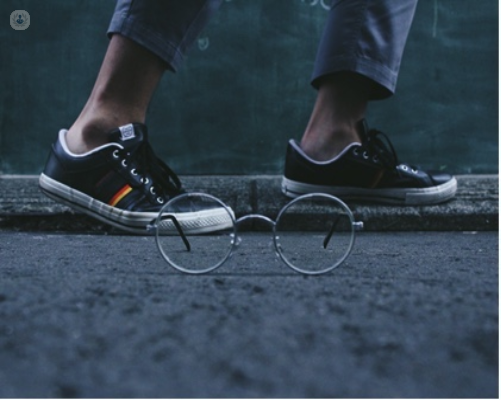Ankle sprain: causes, symptoms and when you should see a doctor
Autore:One of the most common ankle injuries that can happen to anyone, at any age, is a sprain. When the ligaments in the ankle stretch beyond their limits, they tear, leaving you with pain, an inconvenient limp in your stride, and a need to rest before getting back on your feet.
However, sometimes the recovery isn’t that simple, and knowing when you ought to see a doctor for this injury can be tricky. Mr Arshad Khaleel, a highly-regarded consultant trauma and orthopaedic surgeon, reveals more.

What is an ankle sprain?
An ankle sprain is an injury of the ankle ligaments. The job of our ligaments is to connect a bone to another bone, and thus, stabilise a joint to guide our motion.
During an ankle sprain, the ankle joint may be 'rolled-over', which consequently stretches or tears part or the whole of the ligament. It can happen in sports, or more commonly, from tripping up on a kerb. In severe or longstanding cases, the ankle joint is so unstable that the joint surfaces may also be injured.
These types of ankle injuries occur because of the shape of the joint; the ankle bone doesn’t perfectly fit under the leg bones, so the ligaments need to help stabilise the joint. The foot may twist suddenly, particularly when landing on uneven ground, and cause it to rotate inwards. In other cases, the body twists while the foot is planted on the ground, and stretches the outside or lateral ligament complex.
What are the symptoms of an ankle sprain?
Ankle sprains are painful, and there is usually swelling at the beginning. If the sprain is severe enough, you may also notice some bruising. Additionally, walking and weight-bearing on the ankle will be difficult, painful, and may carry the feeling of instability, known as 'giving way'.
What is the treatment?
The majority of ankle sprains require rest, ice, compression and elevation (RICE). This is a well-known method to initially relieve pain and swelling and promote healing. Painkillers and crutches may also be used if you feel you need them, and you may decide to use additional ankle support or braces to help until the swelling subsides.
How long is the recovery?
Typically, the swelling will recede in the first week as long as you have rested the ankle joint enough. Ligaments have stretch receptors that inform the brain about the location of a joint. However, when a ligament is injured, these do not function well. Therefore, it is possible to worsen an ankle sprain by returning to sports too soon. As the pain and swelling recede, it becomes important to move the joint to stop it from stiffening and aid in the healing of the ligament.
When does an ankle injury need the attention of a doctor?
Ankle joints that continue to hurt, swell or give way despite adequate rest, require further assessment and a review by a doctor. This will involve assessing your history and examining the joint and adjoining structures. A doctor also may decide to use carry out an X-ray or MRI scan to visualise the injury.
In most simple ankle sprains, a course of physiotherapy is often all that is required. However, should the ankle fail to respond to non-operative treatment and continue to remain unstable with symptoms, surgery may need to be considered. The current gold standard is the anatomical reconstruction of the ligament and augmentation.
If you are experiencing a persistent ankle injury that isn't improving with home treatments, you can make an appointment with Mr Arshad Khaleel by visiting his Top Doctors profile today and checking his availability.


